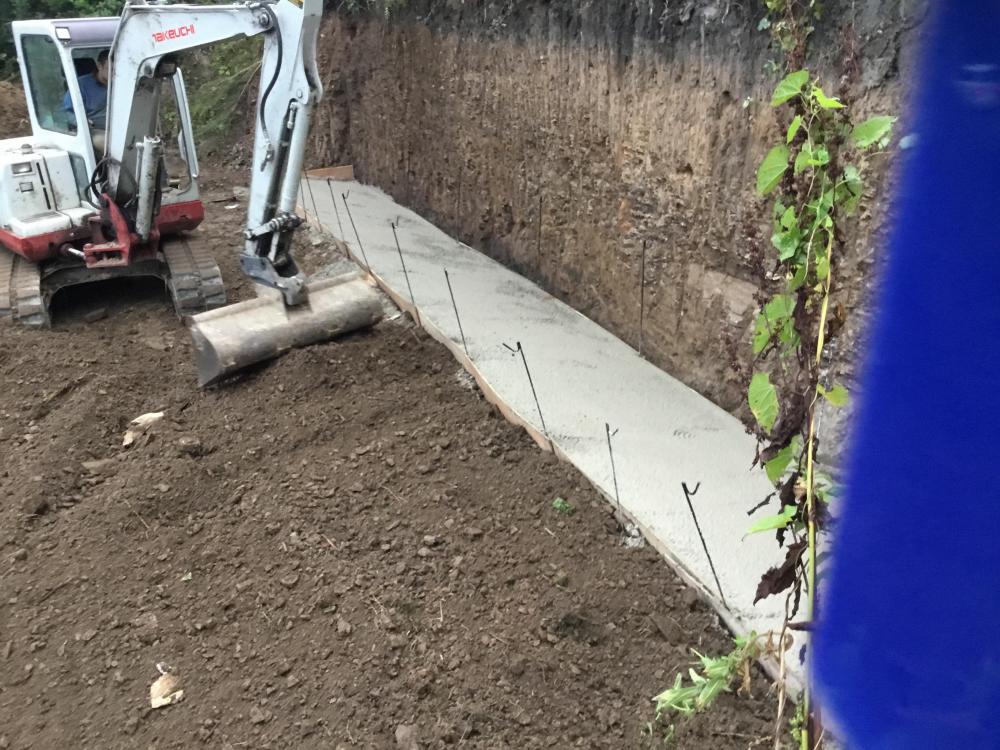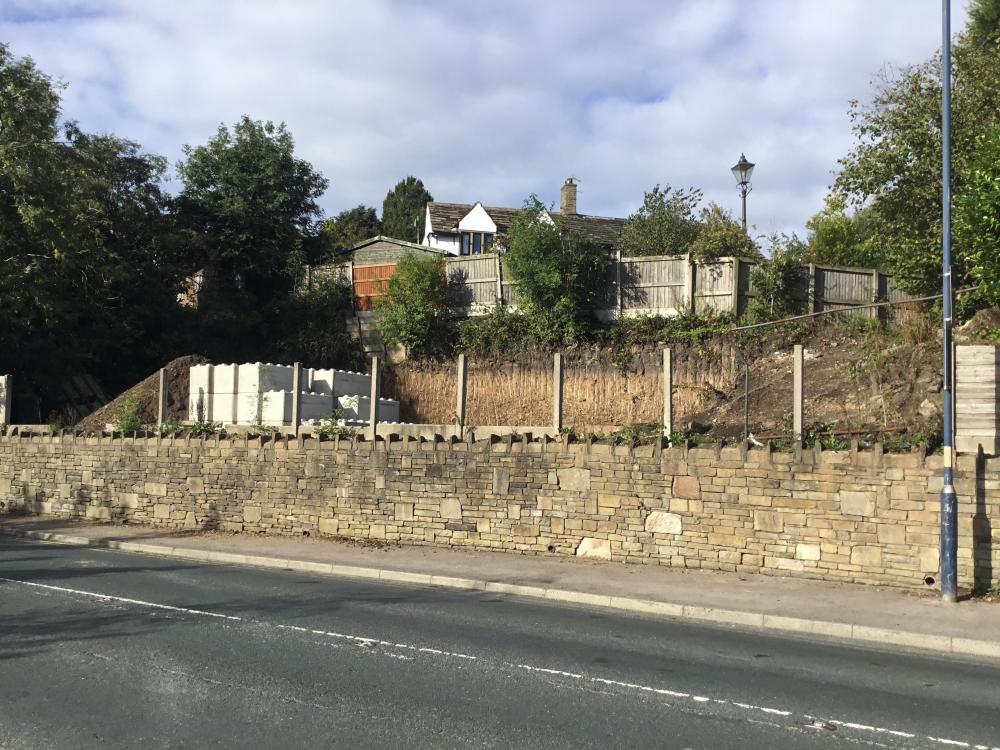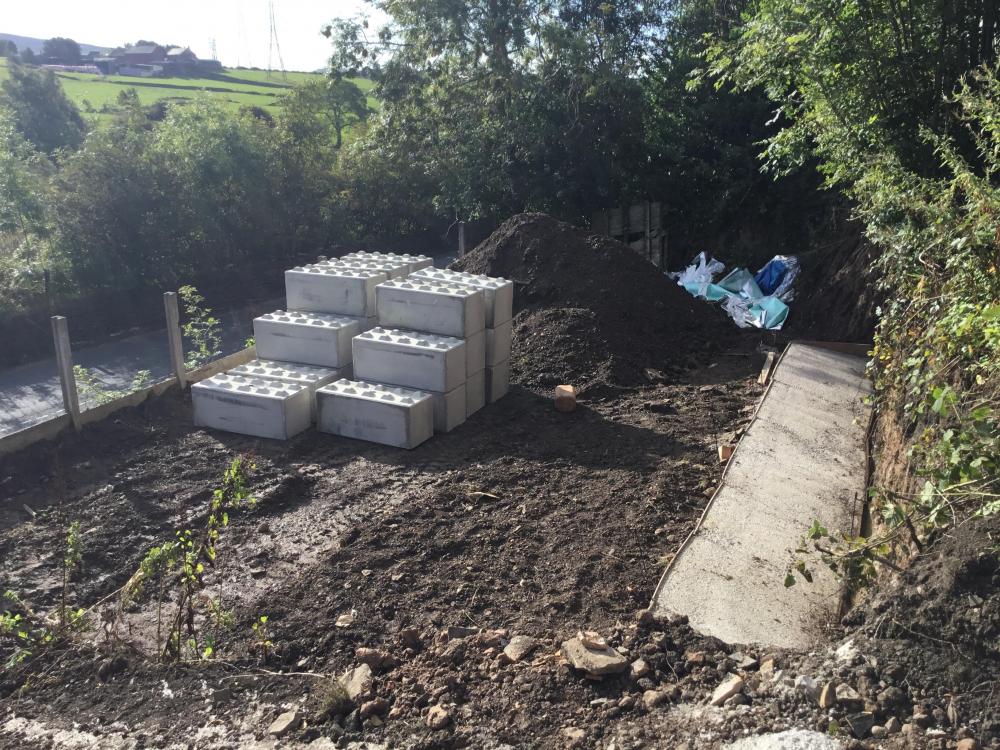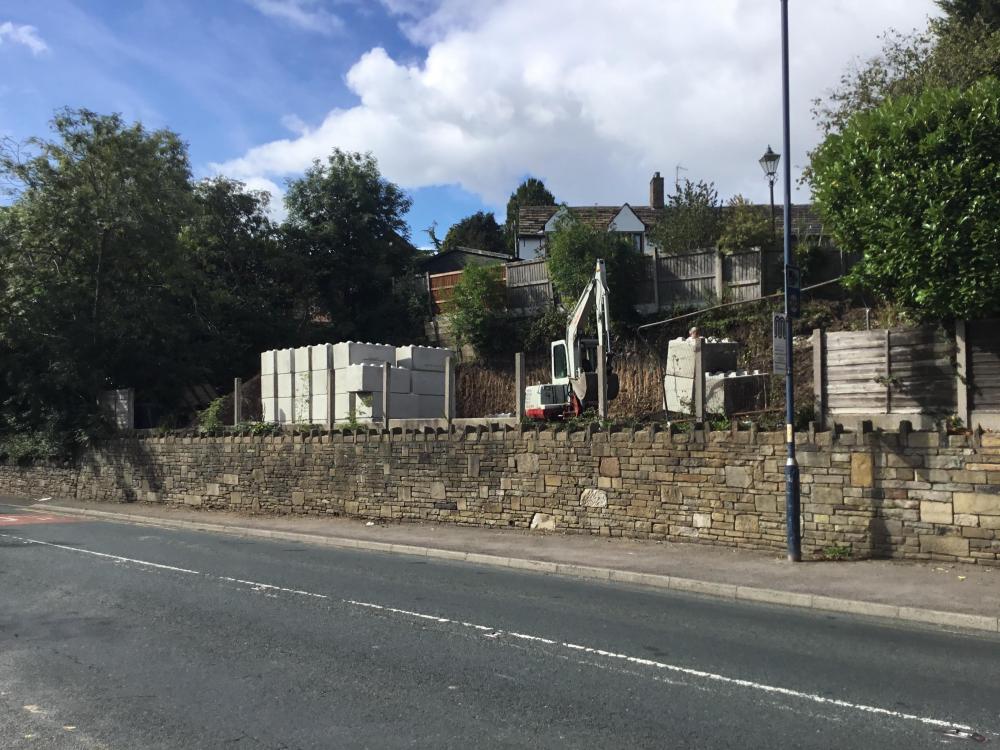Leaderboard
Popular Content
Showing content with the highest reputation on 01/05/20 in all areas
-
Isotex Waste Onsite An interesting point regarding build methods and how much waste they create. With all the blocks that get cut, for one reason or another, the waste has been dealt with in two different ways. The off cuts of insulation (I removed them from the blocks) equate to 9 builders bags. I sold the lot on ebay for the fixed asking price of £20. It was collected from site and is being reused to insulate a garden office. The off cuts of blocks are simply thrown on the hardcore pile ready for the new patio. This situation has meant that site created waste is at an absolute minimum. Skips are not cheap as you know.2 points
-
2 points
-
Looks an interesting site. If you find any bricky laying for £27/m2 can you give them my number,as a I have some work for them!!2 points
-
1 point
-
I am very pleased with the progress and delighted that throughout the rain and wind we had no down time at all because the 380 block can withstand quite a beating even when empty. Also, if I had gone timber frame with the amount of rain we have had I would have struggled to keep it dry. I like it tidy; there is nothing worse than an untidy build or build method.1 point
-
1 point
-
1 point
-
You have two capped off sections there, have you not opened them up for a bit of turd watching.1 point
-
In the past I've found that sodium hydroxide usually clears anything pretty well. Make up a really strong, hot, solution and pour it carefully into the pan, ensuring there's enough to flow down to the blockage (a bucketful will do). Leave it for an hour or so to do its thing, then flush several times to clear everything out.1 point
-
I would externally insulate with battens and cladding. Trying to get good quotes of builders has been a nightmare for me. I thought I finally found a good guy. His quote (for the house shell) came back at £80k (labour not materials). His Labour quote for internal joinery and roof structure (first floor and roof) was more expensive than quotes I had for a full timber frame house supplied and erected. For me the benefit would be cost and the fact that I know I can do it with assistance with my ground worker. Weather isn’t a issue either. Building the wall gave me a new found respect for farmers and their multi task abilities. The day that foundation was poured was torrential rain and it had to have a consistent 10 degree incline. I thought it was going to be a nightmare but they “tampered” it with lengths of timber and got it perfect. My joiner mate came up for a look and said he was amazed.1 point
-
What you need is a buffer tank. Someone will come along shortly I am sure to advice what and how to fit.1 point
-
Good afternoon Ladies and Gents I am but a lowly kitchen fitter. About to start a few projects at home so joined in the hope of picking one or two brain cells from those more knowledgeable than myself! We we have a conservatory (old, more like a greenhouse - 1000c in the summer, arctic in the winter) to take down which will be replaced with a timber framed structure, cladded ( yet to decide between cedar and cedral, mind changed more than once!) and a flat warm epdm roof. Also knocking wall out between kitchen and dining room and putting new kitchen in. I'll be doing majority of this myself bar plumbing/electrics and plastering. Also having the house rewired and karndean throuought the downstairs both of which will be by others who know what they are doing. In the meantime if I can be of any help with anything kitchen related advice feel free to ask. Jez1 point
-
1 point
-
Welcome to the forum. This place thrives on people giving their knowledge freely as well as receiving knowledge from others - it's how we roll here ☺️.1 point
-
Poor old @Conor comes on for a price on brickwork costs and all of a sudden we are trying to reinvent the wheel @scottishjohn1 point
-
In my experience, the flow restriction from the filter housing, even the standard small 10" one, is very low, 99.99% of the restriction comes from the filter cartridge. The refillable inserts that fit the 10" filters also have a very low flow restriction when empty, and I'd guess that the restriction around the polyphosphate pellets will be pretty small, as they are fairly large, with big gaps around them. I'd be inclined to get a standard 10" housing, one with 3/4" BSPF fittings and a clear lower part, plus a clear, refillable media cartridge, and see how it goes. I doubt you'll notice any pressure drop through this. I think you may have to rig up a bypass, anyway, to be able to get the dosing right. I don't think you want all the water to flow through the polyphosphate beads, just enough to get the right dose. A simple bypass across the filter, with a ball valve, would probably be enough to adjust things, but you might also need another valve to restrict the flow through the cartridge a bit. I believe that the clever stuff in the Combimate is mainly the bypass arrangement that gets the dosing right, so I would expect a home brew system to need a bit of trial and error to get set up.1 point
-
Just a quick update for those interested in following the project. We have now installed the Izodom 2000 insulated raft foundation ready for our ISOTEX walls. We have a few details in the roof structure to finalise but we hope to be onsite with the blocks in mid to late September. Anyone who is interested in looking at the insulated slab let me know. Tom1 point
-
What the government believes... https://publications.parliament.uk/pa/cm201719/cmselect/cmbeis/503/503.pdf The issue of plastic backs was first raised at least two years ago yet.. https://www.which.co.uk/news/2019/02/hundreds-of-potentially-unsafe-fridges-and-freezers-still-on-sale/1 point
-
There is a Contents page above that which links a lot more potentially useful information: https://www.gov.uk/hmrc-internal-manuals/vat-construction1 point
-
Hi, We also found there was initially zero mobile signal inside the house - despite having good signal outside. I always assumed it was as a result of using a metal lath as part of the wall build up (under lime render) - however it could be insulation as others suggested. We bought a mobile repeater from these people - https://www.mobilerepeater.co.uk/ . It has an antennae on the outside of the house which connects to a box inside the house which rebroadcasts the signal. We bought an entry level one - which worked, but didn't give good signal throughout the house - so we then bought a much more powerful version, and its been fine since. It seems like this problem is very common in modern houses. We should either : work out what the real causes are and advise people how to avoid the problem, or accept its inevitable but give new builders clear advice to expect it and how to counter with repeaters. Nowadays having good mobile signal inside your house isnt just a nice-to-have, its considered a basic human right by many :). - reddal1 point
-
+1 to Jeremy's comment - I was recommended by the local ratman to use galvanised chicken wire and push into into rainwater downpipes to prevent them climbing up.1 point
-
Get some expanded metal mesh, either galvanised or stainless, and roll it into a ball and stuff it down the duct. Tie a bit of fence wire to the end of the pull cord before you do this, and feed it through the ball of expanded metal. This will stop rodents, yet can easily be pulled out with the draw cord attached when the need arises.1 point
-
Try this: and this http://www.designingbuildings.co.uk/wiki/Self-build_home:_Prepare_for_construction go onto other sections for other items This was started but never finished on ebuild: http://www.ebuild.co.uk/blog/39/entry-371-check-list-index-and-summary/#comment_1831 and this: https://s3.eu-central-1.amazonaws.com/centaur-wp/homebuilding/prod/content/uploads/2012/04/a-self-builders-checklist.pdf1 point
-
This is a good idea - some, non obvious, things that we have done (and a few we forgot). - Permanent kiosk for external electricity meter, removing need for site temps (and the associated costs). Especially useful if demolishing an existing building. - Internal and external power for seasonal needs - we have a lovely large window where we locate the xmas tree, unfortunately no socket so had to put a hole through wall to the study (face plate either side with brushes). - Cat 5 in kitchen for internet radio / TV (forgot this, will need to rely on WiFi) - Cat 5 in plant room for Solar PV controller (remembered this) - Ducting between wall mounted TV and wherever the boxes are - Speaker cable in walls / floor / ceiling - allow for things like Atmos where you may need additional audio channels - IR sensors to activate hot return circuit for DHW and MVHR boost, removes need for dedicated switches and timers - one of the big tips I got from this site, plumber was impressed - We have a large rear square lawn (well, mud for now) where the caravan sat during building, so we had a 25mm MPDE water main running to it. Will now relay this to the centre of the lawn and will hide in small gully - this gives us a central point to water the lawn from in the future (when the RWH tanks are empty). - getting the FFL correct for sliding doors to allow a level threshold (managed this). - noggins for bath cabinets, sinks, mirrors etc - but allow for FFL and read the instructions to see where the actual fittings are. If in doubt, ply the walls. - cheap electric UFH for bathrooms (we did a very last min scramble to fit the conduit and electrics for ours, just after tacking). - lead flashing under external doors (inc, sliding) only remembered this for the front door. - power for velux integra (or equivalent) windows that will be inaccessible. - built in internal / external blinds to minimise solar gain, especially on roof (the Velux external ones are great and patch into the window power system). We omitted one window on the south and regret that, thought it would have more natural shade but forgot about low sun in spring. - allowance for MVHR duct and soil pipe routes, especially if you have steels anywhere, we had to get creative in a few places. - pocket sliding doors for bathrooms - really free up floor space. - running power and control cable for potential future things like video intercom, gate control etc. - ducting for underground BT to avoid overhead cable. - provision for LED lighting on stairs - our bannisters have a strip in the underneath that comes on with low lighting - low level led lighting in hall wall that comes on when it's evening (together with a timer) - useful if guests or kids are popping out to loo or getting a drink at night, also saves having the full hall lighting on in evening I'm sure there will be more...1 point
-
I went through Part F to see what the requirements were in terms of competency to install an MVHR and it turns out that there aren't any! The problem is a cultural one, I think. Building inspectors are getting so used to seeing bits of paper from a supposedly competent person that they seem to expect them for everything. There is a guidance note for providing the evidence that an MVHR has been correctly commissioned, but when I was looking through all the regs its existence was far from obvious, so I just wrote up a report showing compliance with each part of Part F that applied, with some installation photos to show things like the accessibility requirement. It was only later that I found the compliance guidance note, but if anyone's looking for it, it's here: https://www.gov.uk/government/uploads/system/uploads/attachment_data/file/456656/domestic_ventilation_compliance_guide_2010.pdf It's a bit easier to find, now that the government website has been tidied up. Back when we started our build I ended up downloading all the regs and cross referencing the bits that applied to us in a single document, as it was more than a bit frustrating trying to wade through loads of stuff that didn't apply.1 point
-
0 points
-
0 points
-
@joe90 No. Not the billionaires end. We re the ruff part your lot was looking down on from the top of the hill. Ldub =Lawrence weston. ?0 points

